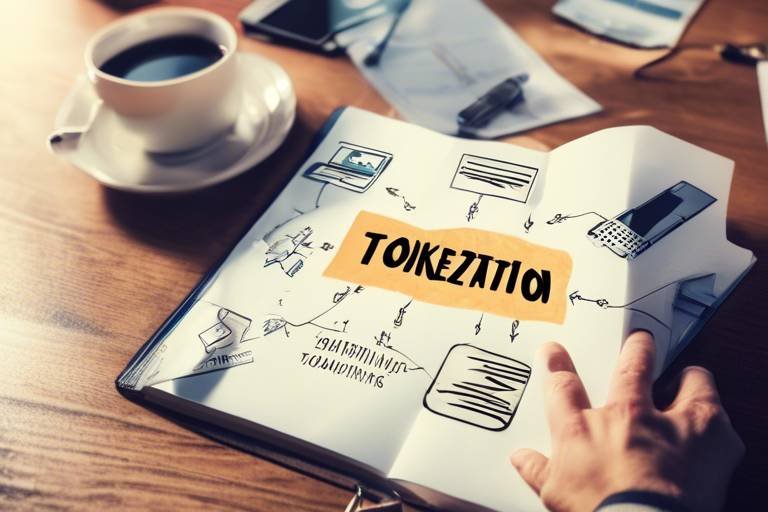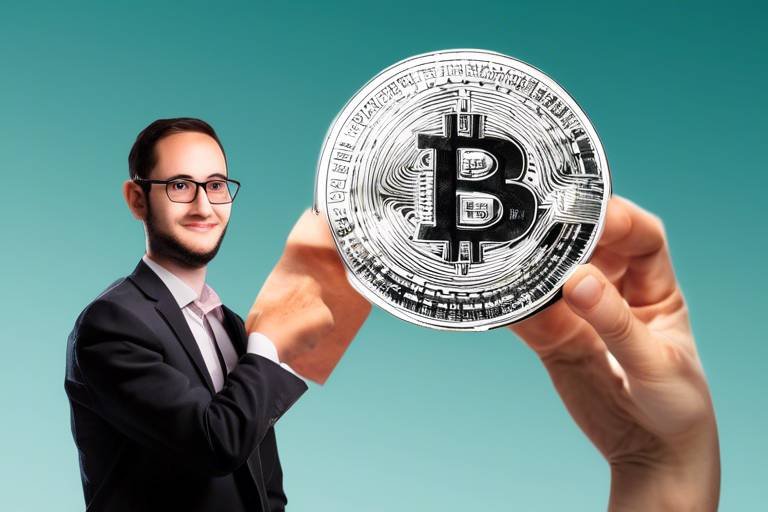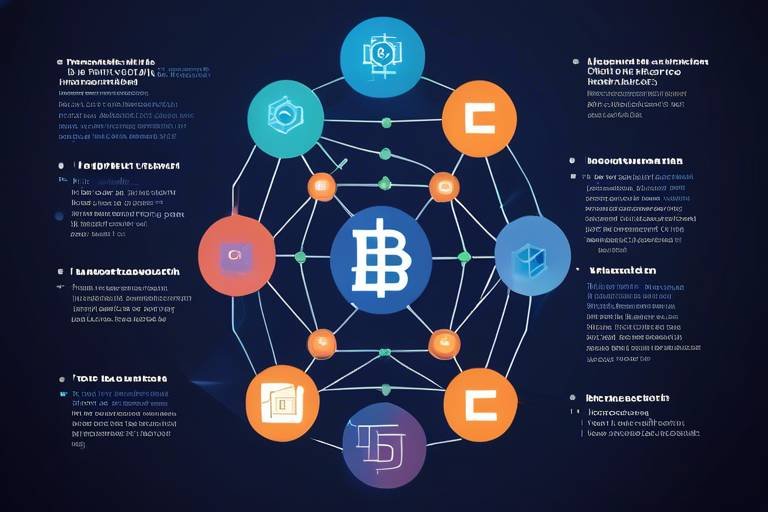Understanding Tokenization - What It Means for Assets and Investments
In today's fast-paced financial landscape, the term tokenization is becoming increasingly prominent. But what does it really mean, and why should you care? Essentially, tokenization is the process of converting ownership rights of an asset into a digital token on a blockchain. This transformation not only facilitates easier transfer of assets but also allows for fractional ownership, which is a game-changer for investors looking to diversify their portfolios. Imagine being able to own a fraction of a high-value asset, like a piece of real estate or a rare piece of art, without needing to break the bank. Sounds appealing, right? This is just one of the many ways tokenization is reshaping the investment landscape.
The implications of tokenization extend far beyond mere convenience. By digitizing assets, we are unlocking a new era of liquidity and accessibility. Traditional asset classes often come with hefty barriers to entry, making it challenging for everyday investors to participate. Tokenization democratizes investment opportunities, allowing a broader audience to engage in markets that were once exclusive to the wealthy elite. As we delve deeper into this concept, you'll discover how tokenization is not just a technological innovation but a revolutionary shift in how we perceive and interact with assets.
Moreover, the security and transparency provided by blockchain technology cannot be overstated. Each tokenized asset comes with a tamper-proof record of ownership and transactions, ensuring that all parties involved can trust the integrity of the asset. This level of security is particularly appealing in an era where data breaches and fraud are rampant. With tokenization, investors can rest easy knowing that their investments are safeguarded by cutting-edge technology.
However, it's essential to recognize that tokenization is not without its challenges. As exciting as it sounds, navigating the regulatory landscape can be daunting. Different jurisdictions have varying rules regarding digital assets, which can create uncertainty for both investors and institutions. Additionally, there are technological barriers that need to be addressed before tokenization can achieve widespread adoption. Traditional financial institutions may struggle to integrate blockchain technology into their existing systems, which could slow down the momentum of this innovative approach.
In conclusion, tokenization is poised to transform the investment landscape by enhancing liquidity, accessibility, and security. As technology advances and regulations evolve, the future of tokenization looks promising, with potential applications across various sectors, including real estate, art, and financial instruments. If you're an investor looking to stay ahead of the curve, understanding tokenization is not just beneficial—it's essential.
- What is tokenization? Tokenization is the process of converting ownership rights of an asset into a digital token on a blockchain.
- What are the benefits of tokenization? Tokenization offers increased liquidity, reduced transaction costs, and access to previously illiquid assets.
- How does tokenization enhance security? Blockchain technology provides a tamper-proof record of ownership and transactions, ensuring security and transparency.
- What challenges does tokenization face? Regulatory uncertainty and technological barriers are significant challenges for the widespread adoption of tokenization.
- What is the future of tokenization? As technology and regulations evolve, tokenization is expected to expand across various sectors, offering new investment opportunities.
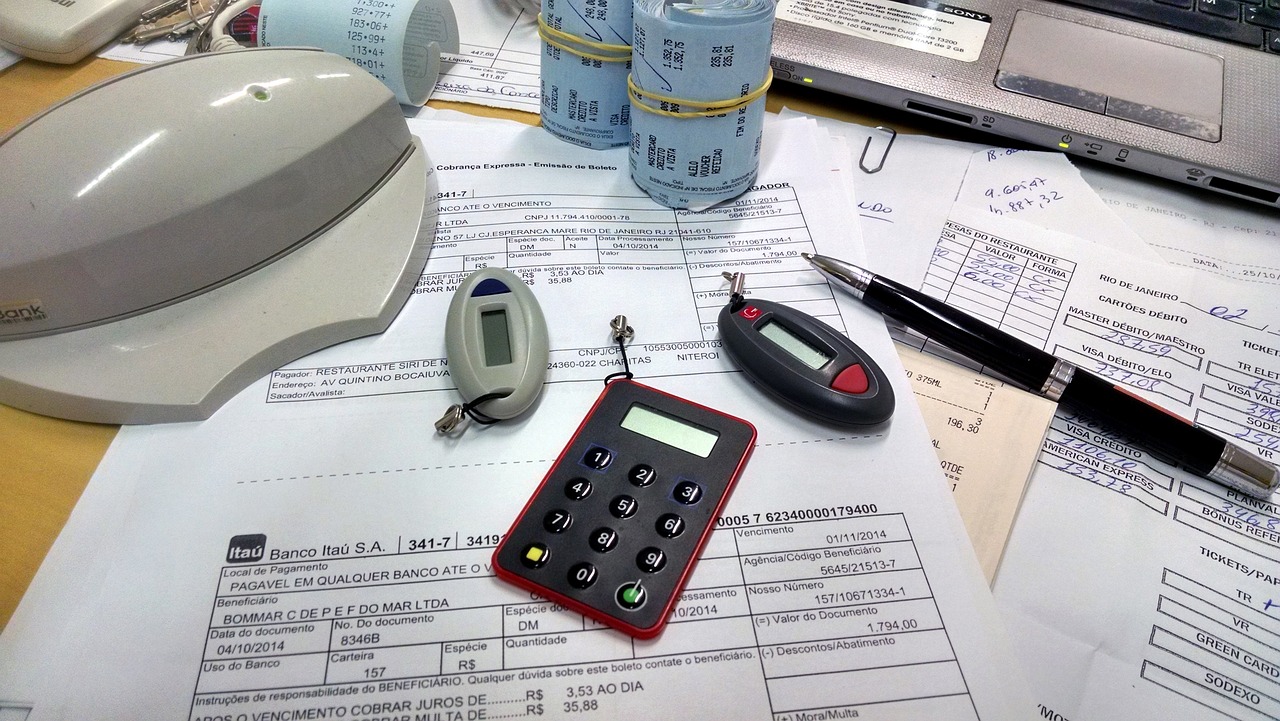
The Basics of Tokenization
Tokenization is an innovative concept that has taken the financial world by storm. At its core, tokenization refers to the process of converting ownership rights of a physical or digital asset into a digital token that resides on a blockchain. This transformation allows for easier transfer and management of assets, fundamentally changing how we perceive ownership. Imagine owning a piece of art or real estate without the traditional complexities of paperwork and intermediaries. Instead, you have a digital token that represents your ownership, making transactions seamless and efficient.
The process of tokenization begins with identifying an asset that can be tokenized. This could be anything from real estate properties and artwork to stocks and bonds. Once the asset is identified, it is then evaluated and digitized, creating a unique token that represents a share or a fraction of that asset. This token is then recorded on a blockchain, ensuring that all transactions are secure and transparent. The beauty of this system lies in its ability to facilitate fractional ownership, allowing multiple investors to own a piece of a high-value asset without needing to buy the entire asset outright.
One of the most exciting aspects of tokenization is its potential to democratize investment opportunities. Traditionally, investing in high-value assets was limited to wealthy individuals or institutional investors. However, with tokenization, anyone can invest in assets that were previously out of reach. For instance, consider a piece of art valued at $1 million. Through tokenization, this artwork can be divided into 1,000 tokens, each worth $1,000. Investors can purchase as many tokens as they like, thus owning a fraction of that artwork. This not only lowers the barrier to entry for investors but also increases the asset's liquidity, as tokens can be easily traded on various platforms.
Moreover, the blockchain technology that underpins tokenization provides a level of security and transparency that is unmatched in traditional finance. Each transaction involving a token is recorded on the blockchain, creating a tamper-proof ledger of ownership. This ensures that all parties involved in a transaction can verify the authenticity of the asset and the legitimacy of the ownership. In a world where fraud and misinformation can easily occur, this level of transparency is a game-changer.
In summary, tokenization is more than just a buzzword; it represents a shift in how we think about ownership and investment. By converting assets into digital tokens, we are not only enhancing liquidity and accessibility but also paving the way for a more inclusive financial landscape. As we continue to explore the potential of tokenization, it’s essential to understand its implications for various asset classes and the investment ecosystem as a whole.
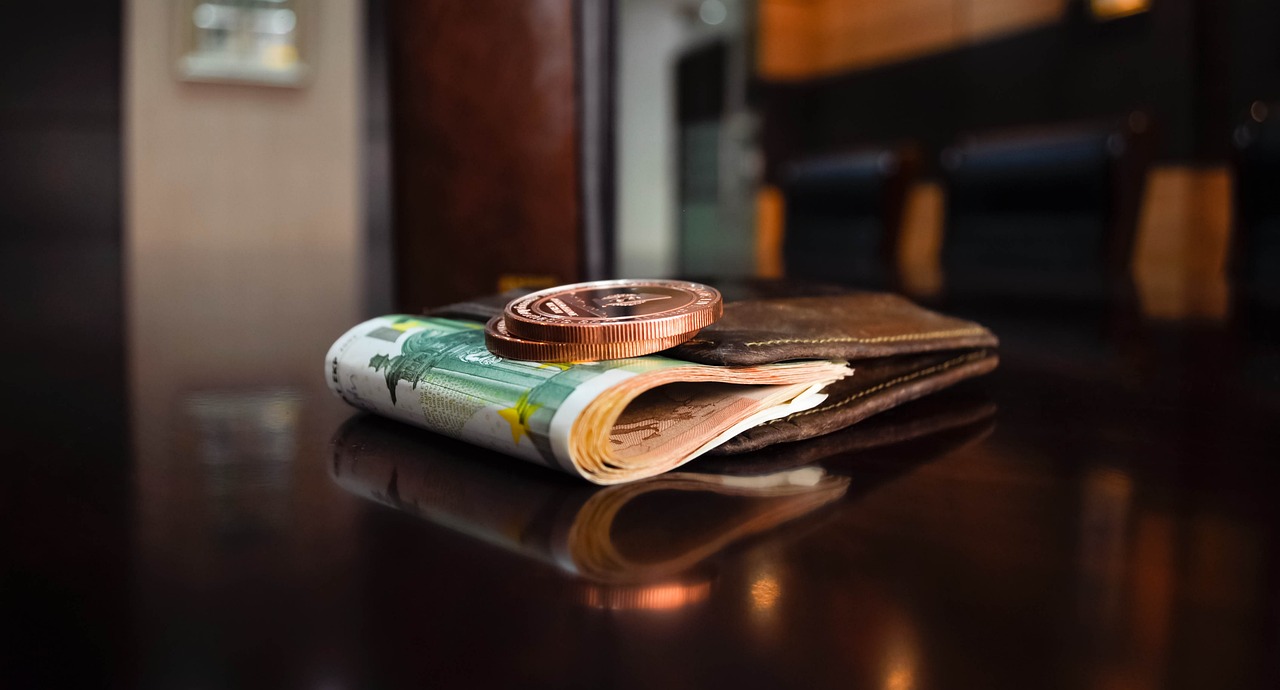
Benefits of Tokenization
Tokenization is not just a buzzword; it's a game-changer in the world of finance and investments. By converting ownership rights into digital tokens on a blockchain, tokenization opens up a treasure trove of benefits for investors and asset owners alike. Imagine being able to trade a piece of real estate or a work of art as easily as you would a stock on the market. This is the reality tokenization brings to the table. One of the most significant advantages is enhanced liquidity. Traditional assets can often be illiquid, meaning they can take time to sell and may require significant transaction costs. Tokenization transforms this by allowing assets to be traded on various platforms, providing investors with the ability to buy and sell more freely.
Another fantastic benefit is the concept of fractional ownership. With tokenization, high-value assets can be divided into smaller, more affordable tokens. This means that instead of needing to buy an entire property, for instance, you could own just a fraction of it. This democratization of investment opportunities allows more people to participate in markets that were previously out of reach. Think of it like owning a slice of a pizza instead of the whole pie; it’s more accessible and allows you to enjoy the benefits without breaking the bank.
Furthermore, tokenization enhances global accessibility. Investors from various corners of the globe can access tokenized assets, breaking down geographical barriers that often hinder investment opportunities. Whether you're in New York or New Delhi, you can invest in a tokenized asset without the need for intermediaries. This opens up a world of possibilities, allowing for a more diverse and inclusive investment landscape.
In addition to liquidity and accessibility, tokenization brings a level of security and transparency that traditional asset management methods simply can't match. With blockchain technology, every transaction becomes part of a tamper-proof record, providing a clear and accessible trail of ownership. This transparency not only builds trust among investors but also helps reduce fraud and disputes, making the entire investment process smoother and more secure.
In summary, the benefits of tokenization are profound and far-reaching. By enhancing liquidity, enabling fractional ownership, improving global accessibility, and ensuring security and transparency, tokenization is paving the way for a new era of investment. As we continue to embrace this innovative approach, the investment landscape will undoubtedly become more democratic and efficient.
- What is tokenization? Tokenization is the process of converting ownership rights of an asset into a digital token on a blockchain.
- How does tokenization enhance liquidity? By allowing assets to be traded on various platforms, tokenization provides greater ease of buying and selling compared to traditional methods.
- What is fractional ownership? Fractional ownership allows multiple investors to own a portion of a high-value asset, making it accessible to a broader audience.
- Are tokenized assets secure? Yes, tokenized assets benefit from blockchain technology, which ensures a tamper-proof record of ownership and transactions.
- Can anyone invest in tokenized assets? Yes, tokenized assets can be accessed by investors globally, breaking down geographical barriers.

Enhanced Liquidity
When we talk about liquidity, we’re diving into how easily an asset can be converted into cash without significantly affecting its price. In traditional markets, some assets can be like trying to sell a rare painting at a yard sale—hard to find a buyer and even harder to get a good price. Enter tokenization, which is like giving these assets a turbo boost, making them much easier to trade. By converting assets into digital tokens on a blockchain, we can trade them on various platforms, opening up a world of possibilities.
Imagine you own a piece of real estate, a stunning property that’s worth a fortune. In the past, selling that property could take months, if not years, and you might have to settle for less than its true value. However, with tokenization, you can break that property into smaller, easily tradable tokens. This means that instead of waiting for one big buyer, you can sell fractions of your property to multiple investors. It’s like slicing a delicious cake into pieces and sharing it with friends—everyone gets a taste, and you still keep your cake!
One of the most exciting aspects of enhanced liquidity through tokenization is the potential for 24/7 trading. Unlike traditional markets that have set hours, tokenized assets can be traded around the clock. This flexibility not only increases the number of transactions but also allows investors to react quickly to market changes. Think of it as having a never-ending buffet where you can come and go as you please—no more waiting for the lunch bell to ring!
Moreover, the ability to trade tokenized assets on multiple platforms means that investors can always find a marketplace that suits their needs. Here’s a quick look at how tokenization enhances liquidity:
| Aspect | Traditional Assets | Tokenized Assets |
|---|---|---|
| Trading Hours | Limited | 24/7 |
| Fractional Ownership | Often Not Possible | Yes |
| Market Access | Geographically Restricted | Global |
| Transaction Costs | Higher | Lower |
In summary, enhanced liquidity through tokenization is revolutionizing the way we think about assets. It’s transforming illiquid investments into dynamic opportunities, allowing more people to join the investment party. So, whether you’re a seasoned investor or just starting out, tokenization is paving the way for a more accessible and vibrant market.
- What is tokenization? Tokenization is the process of converting ownership rights of an asset into a digital token on a blockchain.
- How does tokenization enhance liquidity? By allowing assets to be traded on various platforms and enabling fractional ownership, tokenization increases the ease of buying and selling assets.
- Can all assets be tokenized? While many assets can be tokenized, some may face legal or regulatory challenges that could limit their tokenization.
- Is tokenization safe? Tokenization leverages blockchain technology, which provides a secure and transparent way to record ownership and transactions.

Fractional Ownership
Fractional ownership is a groundbreaking concept that is reshaping the way we think about investing in high-value assets. Imagine being able to own a piece of a luxury yacht or a stunning piece of real estate without having to fork over the entire purchase price. This is precisely what tokenization allows through fractional ownership—making investments more accessible than ever before. By breaking down assets into smaller, more affordable tokens, individuals can invest in a fraction of an asset rather than the whole, democratizing the investment landscape.
Consider this: traditionally, investing in assets such as real estate or art has been reserved for the wealthy elite. However, with the advent of tokenization, these barriers are crumbling. Investors can now buy a fraction of a high-value asset, which not only reduces the financial burden but also diversifies their investment portfolio. For instance, if a piece of art is valued at $1 million, instead of needing to invest the full amount, an investor can purchase a token representing just a 1% share for $10,000. This opens up a world of opportunities for everyday investors to participate in markets that were once considered exclusive.
Moreover, fractional ownership through tokenization also enhances liquidity. In the past, selling a fraction of an asset could be a cumbersome process, often requiring lengthy negotiations and finding the right buyer. However, with tokenized assets, these transactions can occur seamlessly on blockchain platforms, enabling investors to buy and sell their shares much more efficiently. This increased liquidity means that investors can enter and exit positions with ease, making it a more dynamic investment strategy.
In addition, fractional ownership can cater to a variety of asset classes, ranging from real estate to collectibles. Here’s a quick breakdown of how different sectors can benefit:
| Asset Class | Benefits of Fractional Ownership |
|---|---|
| Real Estate | Lower entry costs, diversified portfolio, and easier liquidity. |
| Art | Access to high-value art pieces, shared ownership, and investment diversification. |
| Luxury Goods | Shared ownership of luxury items, reduced financial risk, and potential for appreciation. |
As we move forward, fractional ownership is likely to become a standard practice in many investment sectors. It not only empowers individual investors but also encourages a more inclusive financial ecosystem. So, whether you're a seasoned investor or just starting out, fractional ownership through tokenization can be the key to unlocking new investment opportunities that were once out of reach.
- What is fractional ownership? Fractional ownership allows multiple investors to own a fraction of a high-value asset, making it more affordable and accessible.
- How does tokenization facilitate fractional ownership? Tokenization converts assets into digital tokens on a blockchain, enabling easy transfer and trading of fractional shares.
- What are the benefits of fractional ownership? Benefits include lower investment costs, increased liquidity, and the ability to diversify one's investment portfolio.
- Can I sell my fractional ownership? Yes, fractional ownership can be easily sold or traded on various blockchain platforms.

Global Accessibility
One of the most exciting aspects of tokenization is its ability to break down geographical barriers, making investments accessible to a global audience. Imagine a world where a small investor in a remote village can own a fraction of a luxury property in New York or a piece of art from a renowned gallery in Paris. This is no longer a distant dream; it’s the reality that tokenization brings to the table.
By converting assets into digital tokens on a blockchain, tokenization allows anyone with an internet connection to invest in high-value assets that were previously out of reach. This democratization of investment opportunities is akin to opening the floodgates of financial markets, allowing a diverse range of investors to participate.
Furthermore, tokenized assets can be traded on various platforms, which significantly enhances their liquidity. Investors no longer need to wait for the right moment to sell their shares; they can do so at any time, providing them with greater control over their investments. This ease of access is particularly beneficial in emerging markets, where traditional financial systems may be lacking or overly complex.
Consider the following advantages of global accessibility through tokenization:
- Diverse Investment Options: Investors can access a wider range of asset classes, including real estate, art, and commodities, all from the comfort of their homes.
- Lower Barriers to Entry: With fractional ownership, individuals can invest smaller amounts, making it feasible for more people to enter the investment landscape.
- Increased Market Participation: A broader investor base can lead to more vibrant markets, driving innovation and growth.
As we move forward, the implications of global accessibility through tokenization are profound. It not only empowers individual investors but also fosters a more inclusive financial ecosystem. With the right technological infrastructure in place, the dream of a truly global marketplace can become a reality, where anyone can invest in opportunities that were once reserved for the elite.
Q1: What is tokenization?
A1: Tokenization is the process of converting ownership rights of an asset into a digital token on a blockchain, allowing for easier transfer and fractional ownership.
Q2: How does tokenization enhance liquidity?
A2: Tokenization allows assets to be traded on various platforms, providing investors with greater liquidity compared to traditional asset classes.
Q3: What are the regulatory considerations for tokenization?
A3: Navigating the regulatory landscape is crucial as different jurisdictions have varying rules regarding digital assets, which can impact the adoption of tokenization.
Q4: Can anyone invest in tokenized assets?
A4: Yes, tokenization enables global accessibility, allowing investors from various backgrounds and locations to participate in markets that were previously out of reach.
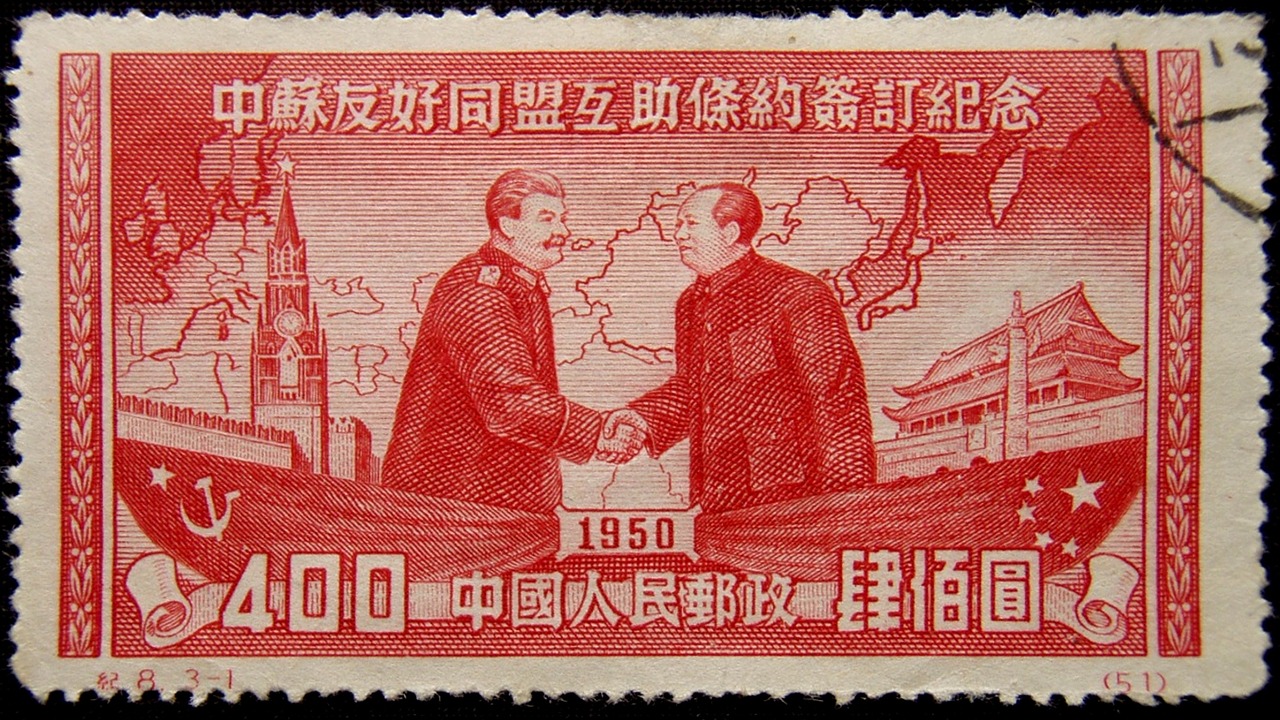
Security and Transparency
When it comes to investments, security and transparency are paramount. Tokenization, leveraging the power of blockchain technology, brings a new level of trust to the investment landscape. Imagine a world where every transaction is recorded in a digital ledger that is nearly impossible to alter. That’s what blockchain offers—a tamper-proof record of ownership and transactions that can be accessed by anyone at any time.
One of the most compelling aspects of tokenization is its ability to provide a transparent view of asset ownership. Each token is linked to specific ownership rights, and the entire history of the asset can be traced back through the blockchain. This means that investors can verify the legitimacy of their investments without relying on intermediaries. Think of it as having a digital title deed that not only proves ownership but also shows the entire chain of custody for that asset.
Moreover, the decentralized nature of blockchain enhances security. Traditional systems often rely on a central authority, which can be vulnerable to hacks or fraud. In contrast, tokenized assets are distributed across a network of computers, making it exceedingly difficult for any single entity to manipulate the data. This decentralization acts as a fortress, protecting investors from potential threats. For example, if one node in the network is compromised, the others remain intact, ensuring that the integrity of the asset's information is preserved.
To illustrate this further, let’s look at a comparison of traditional asset ownership versus tokenized asset ownership:
| Aspect | Traditional Ownership | Tokenized Ownership |
|---|---|---|
| Ownership Record | Centralized, often paper-based | Decentralized, digital ledger |
| Transfer Process | Involves intermediaries (lawyers, banks) | Peer-to-peer transfer on blockchain |
| Verification | Requires third-party verification | Instant verification using blockchain |
| Security | Vulnerable to fraud and hacks | Highly secure due to decentralization |
In addition to security and transparency, tokenization also facilitates compliance with regulations. Smart contracts—self-executing contracts with the terms of the agreement directly written into code—can automate compliance processes. This means that investors can rest assured that their investments meet regulatory requirements without the need for extensive manual oversight. It’s like having a digital watchdog that ensures everything is above board.
In summary, tokenization not only democratizes access to assets but also enhances security and transparency, creating a more trustworthy investment environment. As more investors recognize these benefits, the demand for tokenized assets is likely to increase, paving the way for a new era of investment opportunities.
- What is tokenization? Tokenization is the process of converting ownership rights of an asset into a digital token on a blockchain.
- How does tokenization enhance security? Tokenization utilizes blockchain technology, which provides a decentralized and tamper-proof record of ownership and transactions.
- Can tokenized assets be traded? Yes, tokenized assets can be traded on various platforms, providing greater liquidity compared to traditional assets.
- What are smart contracts? Smart contracts are self-executing contracts with the terms directly written into code, automating compliance and transactions.

Challenges of Tokenization
While tokenization presents a thrilling frontier in the world of investments, it is not without its hurdles. Picture trying to navigate a dense forest; while the view is breathtaking, the path can be fraught with obstacles. One of the most significant challenges is regulatory uncertainty. Different countries have their own sets of rules regarding digital assets, and these regulations can vary widely. For instance, what might be considered a secure investment in one jurisdiction could be deemed illegal in another. This patchwork of regulations can create confusion for investors and institutions alike, stifling the growth of tokenization.
Moreover, the technological barriers associated with adopting blockchain technology can also pose significant challenges. Traditional financial institutions, often steeped in legacy systems, may find it difficult to integrate new blockchain solutions. This resistance to change can slow down the adoption of tokenization, leaving many potential investors on the sidelines. It's akin to trying to fit a square peg into a round hole; without the right adjustments, the fit just won't work.
Additionally, there's the challenge of widespread adoption. For tokenization to truly take off, both investors and institutions need to embrace this new paradigm. However, many are still hesitant, often due to a lack of understanding or familiarity with the technology. This hesitance can lead to a slower rollout of tokenized assets, which can be frustrating for those eager to dive into this innovative investment space.
In summary, while tokenization holds immense potential, it is essential to address these challenges head-on. The road may be rocky, but with the right strategies and a collaborative approach, we can pave the way for a more accessible and efficient investment landscape.
- What is tokenization? Tokenization is the process of converting ownership rights of an asset into a digital token on a blockchain, facilitating easier transfer and fractional ownership.
- What are the main benefits of tokenization? Tokenization offers increased liquidity, reduced transaction costs, and democratizes access to previously illiquid assets.
- What are the challenges facing tokenization? Key challenges include regulatory uncertainty, technological barriers, and the need for widespread adoption among investors and institutions.
- How does tokenization enhance security? Tokenization leverages blockchain technology, providing a secure and transparent record of ownership and transactions that is tamper-proof.

Regulatory Considerations
When diving into the world of tokenization, one cannot overlook the intricate web of that accompany this innovative financial technology. As tokenization gains momentum, it brings with it a host of legal and compliance challenges that must be navigated carefully. Different countries have varying regulations regarding digital assets, which can create a complex landscape for businesses and investors alike. For instance, while some jurisdictions are embracing blockchain technology and tokenization, others remain hesitant, imposing strict regulations that could stifle innovation.
One of the primary concerns is how tokenized assets are classified. Are they securities, commodities, or something entirely new? This classification can significantly impact the regulatory requirements that businesses must adhere to. In the United States, for example, the Securities and Exchange Commission (SEC) has established guidelines that can classify certain tokens as securities, which means they would be subject to stringent regulations designed to protect investors. On the other hand, countries like Switzerland have adopted a more progressive stance, offering clear frameworks that encourage tokenization.
Moreover, regulatory bodies are increasingly focused on anti-money laundering (AML) and know your customer (KYC) requirements. These regulations are crucial in ensuring that tokenized transactions are transparent and that the identities of the parties involved are verified. As a result, businesses looking to tokenize assets must implement robust compliance measures to meet these regulatory demands. Failure to do so can lead to severe penalties, including fines and restrictions on operations.
In addition to compliance, there is also the challenge of ensuring consumer protection. As more investors enter the tokenized asset space, it's essential to provide them with the information they need to make informed decisions. This includes clear disclosures about the risks associated with investing in tokenized assets, as well as the potential for volatility. Regulatory bodies are increasingly emphasizing the need for transparency to protect investors and maintain market integrity.
As we look to the future, it’s clear that regulatory considerations will play a pivotal role in shaping the landscape of tokenization. The ongoing dialogue between regulators, businesses, and investors will be crucial in establishing a balanced framework that fosters innovation while safeguarding the interests of all stakeholders involved. Ultimately, the success of tokenization hinges on navigating these regulatory waters effectively, ensuring that the benefits of this revolutionary technology can be realized without compromising security or compliance.
- What is tokenization? Tokenization is the process of converting ownership rights of an asset into a digital token on a blockchain, facilitating easier transfer and fractional ownership.
- What are the benefits of tokenization? Tokenization offers enhanced liquidity, reduced transaction costs, and access to previously illiquid assets, democratizing investment opportunities.
- How does regulation impact tokenization? Regulatory considerations affect how tokenized assets are classified and governed, influencing compliance requirements and consumer protection measures.
- What are the challenges of tokenization? Challenges include regulatory uncertainty, technological barriers, and the need for widespread adoption among investors and institutions.
- What is the future of tokenization? The future looks promising as technology advances and regulations evolve, with applications across sectors like real estate, art, and financial instruments.

Technological Barriers
When we talk about tokenization, it's essential to recognize that while the concept is revolutionary, the road to widespread adoption is paved with . Think of it like trying to get a new car model onto the market; the design might be fantastic, but if the manufacturing process isn't up to scratch, you're going to face some serious hurdles. Similarly, for tokenization to truly take off, the underlying technology must be robust, reliable, and user-friendly.
One of the primary challenges is the integration of blockchain technology with existing financial systems. Many traditional financial institutions are still using legacy systems that are not compatible with blockchain. This disparity can lead to inefficiencies and increased costs, which can deter organizations from embracing tokenization. In fact, a recent survey indicated that over 60% of financial institutions cited integration challenges as a significant barrier to adopting blockchain solutions.
Moreover, the complexity of blockchain technology can be intimidating for many potential users. Understanding how to create, manage, and trade tokens requires a certain level of technical proficiency that not everyone possesses. This steep learning curve can create a barrier for both individual investors and institutions. If you think about it, it’s like trying to teach someone to drive a car without ever letting them sit behind the wheel. Without hands-on experience, it’s easy to feel overwhelmed.
Another crucial aspect is the scalability of blockchain networks. As more assets are tokenized and transactions increase, the underlying blockchain must be able to handle this growth without compromising speed or security. Some existing blockchain platforms face challenges related to transaction speed and costs, which can become prohibitive as demand rises. For instance, during peak times, transaction fees can skyrocket, making it expensive to transfer tokens. This can discourage users from engaging with tokenized assets, especially those who are cost-sensitive.
To illustrate these points, consider the following table that outlines some of the key technological barriers to tokenization:
| Barrier | Description |
|---|---|
| Integration Issues | Difficulty in merging blockchain technology with existing financial systems. |
| Complexity | High technical knowledge required to understand and utilize tokenization. |
| Scalability | Challenges in handling increased transactions without compromising performance. |
Lastly, the security of blockchain itself is a double-edged sword. While blockchain is known for its security features, vulnerabilities can still exist, especially in smart contracts. If a tokenized asset relies on a smart contract that has not been thoroughly audited, it can be susceptible to hacks or unintended consequences. This potential for security breaches can further complicate the acceptance of tokenization among more conservative investors and institutions.
In conclusion, while the promise of tokenization is indeed exciting, overcoming these technological barriers is essential for its success. As the industry progresses, we can expect ongoing innovations that will address these challenges, paving the way for a future where tokenization is commonplace and accessible to all.
- What is tokenization? Tokenization is the process of converting ownership rights of an asset into a digital token on a blockchain.
- What are the benefits of tokenization? Benefits include enhanced liquidity, reduced transaction costs, and increased accessibility to various asset classes.
- What challenges does tokenization face? Key challenges include regulatory uncertainty, technological barriers, and the need for widespread adoption.
- How does blockchain enhance security? Blockchain provides a tamper-proof record of ownership and transactions, ensuring transparency and security.

Future of Tokenization
The future of tokenization is not just a fleeting trend; it’s a revolution that’s reshaping the way we think about assets and investments. As technology continues to advance and regulations adapt, tokenization is poised to permeate various sectors, including real estate, art, and financial instruments. Imagine a world where you can own a fraction of a Picasso or a luxury apartment in New York City without needing millions in your bank account. This is the promise of tokenization, making high-value assets accessible to the everyday investor.
One of the most exciting prospects of tokenization is its ability to democratize investment opportunities. Historically, investing in certain asset classes required significant capital, often leaving average investors on the sidelines. With tokenization, we can expect to see a surge in platforms that allow for fractional ownership, enabling individuals to invest in high-value assets with minimal amounts. This not only diversifies portfolios but also spreads risk across a broader base of investors.
Furthermore, as we look to the future, the integration of tokenization with emerging technologies such as artificial intelligence and the Internet of Things (IoT) could unlock even greater potential. For instance, smart contracts—self-executing contracts with the terms of the agreement directly written into code—can automate and streamline transactions, making the process faster and less prone to human error. Imagine buying a tokenized asset and having the ownership transfer executed automatically without the need for intermediaries. This could significantly reduce costs and improve efficiency.
However, with great potential comes great responsibility. The future of tokenization will require robust regulatory frameworks to ensure that investor protection is prioritized. As governments and regulatory bodies begin to understand and embrace this new digital frontier, they will need to create guidelines that foster innovation while safeguarding the interests of investors. This balance will be crucial for the sustained growth of the tokenization market.
In addition to regulatory considerations, the education of investors will play a pivotal role in the widespread adoption of tokenization. Many investors are still unfamiliar with blockchain technology and its implications for traditional investing. Educational initiatives, workshops, and informative content will be essential in demystifying tokenization and fostering a sense of trust among potential investors.
As we stand on the brink of this exciting future, it's clear that tokenization is not just a passing phase; it’s a fundamental shift in how we perceive ownership and investment. The possibilities are endless, and as we embrace this digital transformation, the landscape of investing will never be the same.
- What is tokenization? Tokenization is the process of converting ownership rights of an asset into a digital token on a blockchain, allowing for easier transfer and fractional ownership.
- How does tokenization enhance liquidity? By converting assets into tokens, they can be traded on various platforms, providing investors with greater liquidity compared to traditional asset classes.
- What are the challenges of tokenization? Tokenization faces challenges such as regulatory uncertainty, technological barriers, and the need for widespread adoption among investors and institutions.
- What sectors can benefit from tokenization? Sectors like real estate, art, and financial instruments are expected to see significant advancements due to tokenization.
Frequently Asked Questions
- What is tokenization?
Tokenization is the process of converting ownership rights of an asset into a digital token on a blockchain. This allows for easier transfer and enables fractional ownership, making it simpler for people to invest in various asset classes.
- How does tokenization enhance liquidity?
By converting assets into tokens, they can be traded on multiple platforms, which provides greater liquidity compared to traditional asset classes. This means investors can buy and sell assets more easily and quickly.
- What are the benefits of fractional ownership?
Fractional ownership allows multiple investors to own a piece of high-value assets, such as real estate or art. This democratizes investment opportunities, enabling people to participate in markets that were previously out of reach.
- Is tokenization accessible to global investors?
Absolutely! Tokenization breaks down geographical barriers, allowing investors from around the world to access tokenized assets. This expands the investor base and promotes inclusivity in the investment landscape.
- How does blockchain technology ensure security in tokenization?
Blockchain technology creates a tamper-proof record of ownership and transactions, ensuring that tokenized assets are secure and transparent. This enhances trust among investors, as they can verify the authenticity of their investments.
- What challenges does tokenization face?
Tokenization encounters challenges such as regulatory uncertainty, technological barriers, and the need for widespread adoption among investors and institutions. These factors can impact the growth and acceptance of tokenized assets.
- Why are regulatory considerations important for tokenization?
Regulatory considerations are crucial because different jurisdictions have varying rules regarding digital assets. Navigating this complex landscape is essential for tokenization to thrive and gain legitimacy in the financial world.
- What technological barriers exist in tokenization?
The adoption of blockchain technology and the necessary infrastructure for tokenization can pose challenges, especially for traditional financial institutions. Overcoming these barriers is vital for the successful integration of tokenized assets.
- What does the future hold for tokenization?
The future of tokenization looks promising as technology advances and regulations evolve. We can expect to see potential applications across various sectors, including real estate, art, and financial instruments, making investments more efficient and accessible.

